This series introduces what "value-creating" PR means for companies moving forward.
In Part 1, based on research by the Corporate Public Relations Strategy Institute (abbreviated as C.S.I., within Dentsu Inc. PR), we identified the following three key target groups essential for successful "value-creating" PR:
- Top Priority Target 1: Pursuing "Social Value" Centered on Shareholders and Investors
- Key Target #2: Building "Engagement" with Customers
- Key Target 3: Practicing "Internal Branding" with "Employees and Their Families"
This installment introduces, with case studies, how to specifically identify and engage with these key targets to realize "value creation" PR.
Not only investors, but also everyday consumers are paying attention to "social value"
This article defines "social value" as
defined as new value created by tackling social challenges through unique assets, businesses, and philosophies, aiming to enhance corporate value while achieving sustainable societal growth.
and views it as a crucial theme at the core of "value creation" PR.
Interest in "social value" is growing not only from shareholders and investors through the lens of ESG investing, but also increasingly from the general public.
This trend is reflected in our institute's ESG and SDGs survey. When asked, "After learning about a company's SDGs initiatives, did you take actual action regarding that company?", over 70% of general consumers responded that they had taken action [Figure 1].
Breaking down the actions, approximately one in 3.5 people "visited the company's website," and about one in five "purchased or used the company's products or services" [Figure 2].
The general public is observing corporate activities linked to "social value" more than we might imagine, and society is shifting toward greater attitude change driven by this.
Moreover, this trend is stronger among younger generations [Figure 3], making it an indispensable theme for enhancing engagement with the next generation who will support the future economy and society.
[Figure 1] People who learned about corporate SDGs initiatives and took action
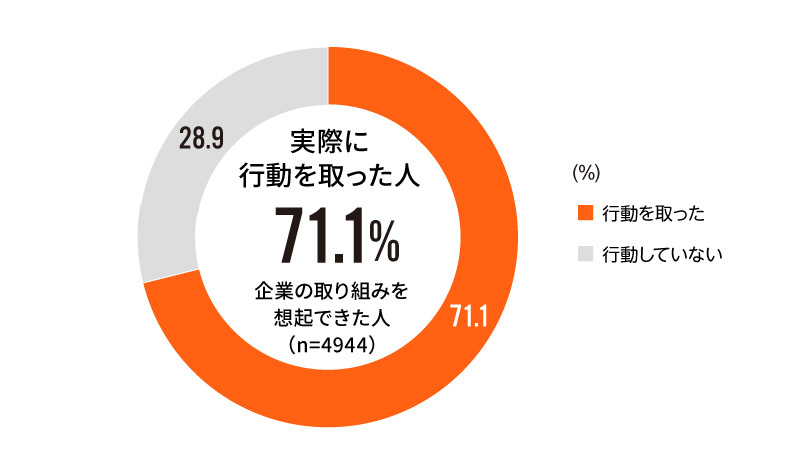
[Chart 2] Breakdown of actions taken after learning about corporate SDG initiatives
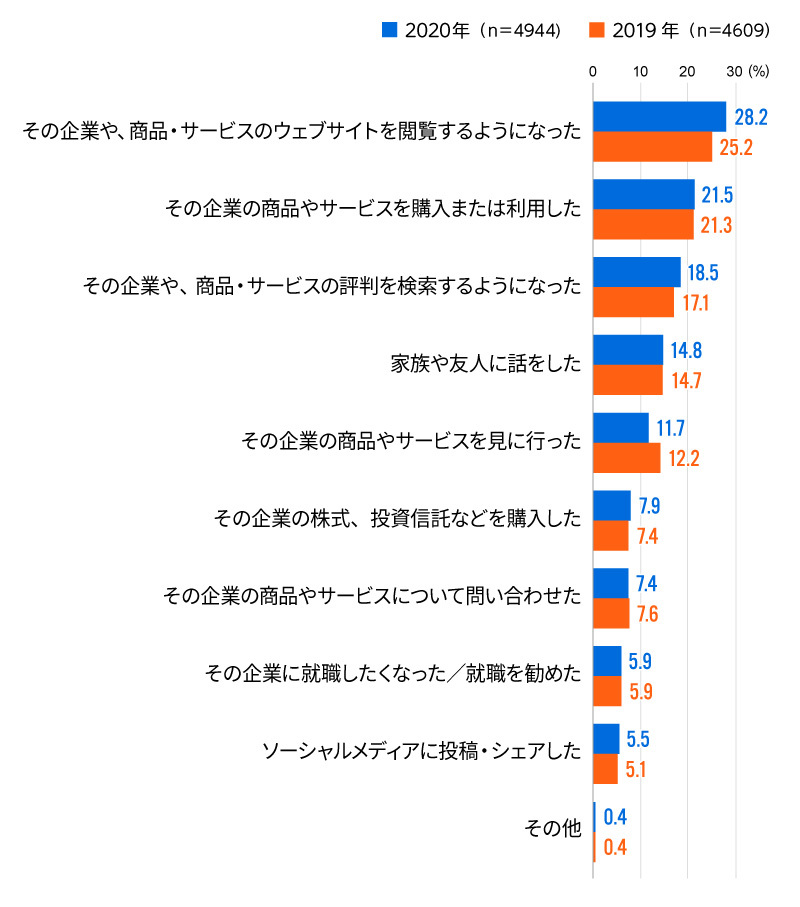
[Chart 3] Breakdown of actions taken after learning about corporate SDGs by age group
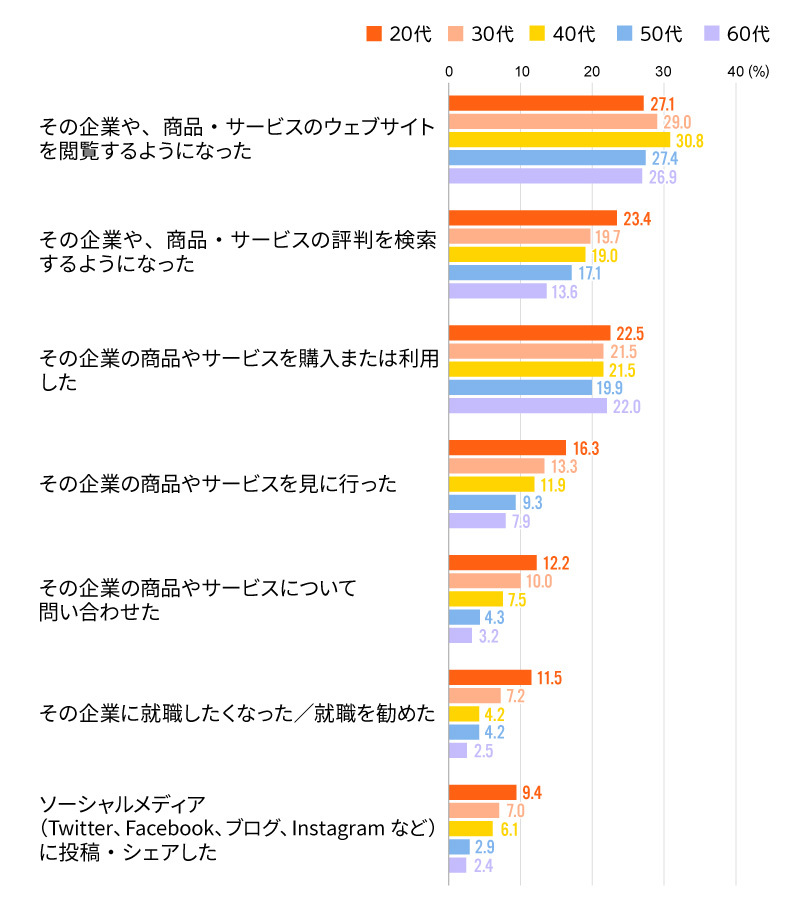
When considering "value creation" with this "social value" at its core, ESG management and SDGs promotion naturally emerge as key themes. In our institute's book published late last year, "New Strategic Thinking in PR Management," we interviewed Junko Ohtani, Head of ESG Communications at Kao Corporation—a company highly regarded as an ESG leader—to explore the practice of ESG management and "value creation."
From another perspective, the primary activities for companies to realize "social value" include
"Customer Engagement" and "Internal Branding®"
.
Our institute defines each as follows:
Customer Engagement: Activities that create new value leading to "positive relationships" with customers through multifaceted, two-way communication.
Internal Branding: Activities that recognize employees as the company's most important asset, deepening each employee's understanding of and resonance with the corporate philosophy, ensuring its permeation throughout the business, and creating new value.
Creating New Value as One Team: Sumitomo Corporation's "22nd Century Project"
From here, we will explain the practice of "value creation" communications using the case of Sumitomo Corporation, which is realizing "value creation" linked to "social value" through an internal branding approach.
The Sumitomo Corporation Group's "22nd Century Project" was a company-wide initiative implemented over a three-year plan from 2017 to 2019. It aimed to create a movement of "change and challenge" coinciding with the company's 100th anniversary in December 2019.
The project gained employee support primarily through its thorough bottom-up approach and the genuine commitment demonstrated by top management.
The project was driven by passionate "ambassadors" selected through an open internal recruitment process. This was reportedly the first time such an internal recruitment drive had been conducted. This alone demonstrates how seriously this traditional major corporation committed to launching a new initiative. This commitment likely resonated with employees.
Furthermore, the fundamental premise of this bottom-up approach was top management's commitment: "Everything can change except Sumitomo's business spirit and management philosophy."
This likely allowed the ambassadors to fully engage in discussions focused on "change and challenge." When aiming to involve employees and create together with them, it is crucial to establish an environment where employees feel secure to exert their full potential and for management to motivate them.
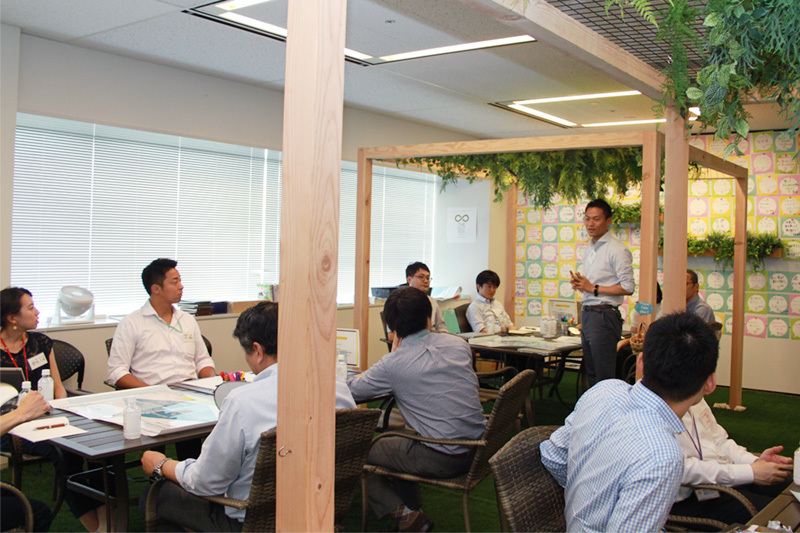
A scene from an employee workshop hosted by the ambassadors
The first initiative was a thorough analysis of the Sumitomo Corporation Group. Voices from over 1,000 people, both inside and outside the company, were gathered. Based on this, the ambassadors held repeated discussions. As a result, the elements requiring reinforcement were consolidated into four pillars: "Future-Oriented Approach," "Diversity," "Connective Power," and "Individual Strength." Various action plans were then devised and implemented to strengthen these areas.
One such initiative, "Future LAB," facilitated exchanges between Group employees and individuals from other industries. Workshops explored diverse perspectives—including agriculture, regional revitalization, and education—encouraging participants to envision uncharted worlds and future societies. This activity reportedly led to the establishment of the current open innovation lab, "MIRAI LAB PALETTE."
"MIRAI LAB PALETTE" operates as a space where diverse members from within and outside the group co-create new value, transcending organizational and disciplinary boundaries. Various initiatives are underway, including collaboration with Tokyo University of the Arts to explore business development incorporating an artistic perspective, and joint projects with Namie Town in Fukushima Prefecture.
Bottom-up "value creation" projects demand considerable effort and time. Sumitomo Corporation's initiative serves as a case study demonstrating that deliberately investing this effort and time to realize tangible facts that resonate with each employee can lead to new corporate "value creation."
Corporate "Value Creation" Based on Facts That Resonate with Stakeholders
As evident from Sumitomo Corporation's case, the key to effective "value creation" communications lies in defining challenges that resonate with stakeholders and creating action plans to solve them. Crucially, these action plans must be initiatives that stakeholders want to participate in.
As shown in Figure 4, extracting challenges that resonate with key stakeholders from the myriad social issues facing society, and implementing initiatives to solve them, leads to the creation of new social value. We believe this series of "value creation" activities contributes to gaining the reputation of being an "attractive company" among stakeholders.
[Figure 4] Conceptual Diagram of Social Value
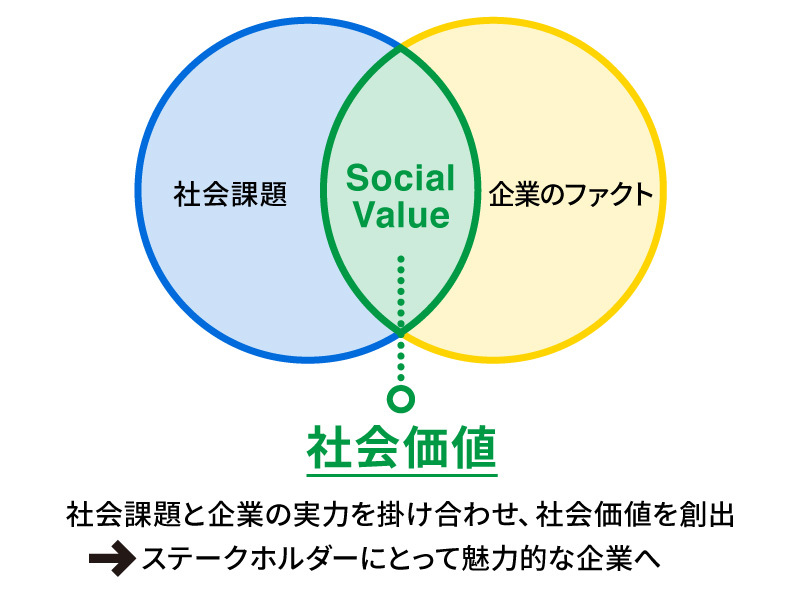
Our institute also investigates and researches the relationship between corporate facts and brand image. We will introduce in the next installment what kinds of facts resonate as appealing to the general public and contribute to shaping brand image.
In any case, for public relations and PR in today's era, it is crucial for companies to assess their own capabilities based on their long-held corporate philosophy and vision, and to continuously generate new "social value" by solving social issues.
[Survey Overview]
■ESG/SDGs Survey
Survey Participants: 10,500 men and women aged 20-69 nationwide

Survey Method/Period: Online survey, June 24-30, 2020
Questions: Awareness of ESG/SDGs, expected corporate SDGs initiatives, degree of ESG consideration in investment decisions, etc.
*This survey rounds figures to the nearest hundredth.








